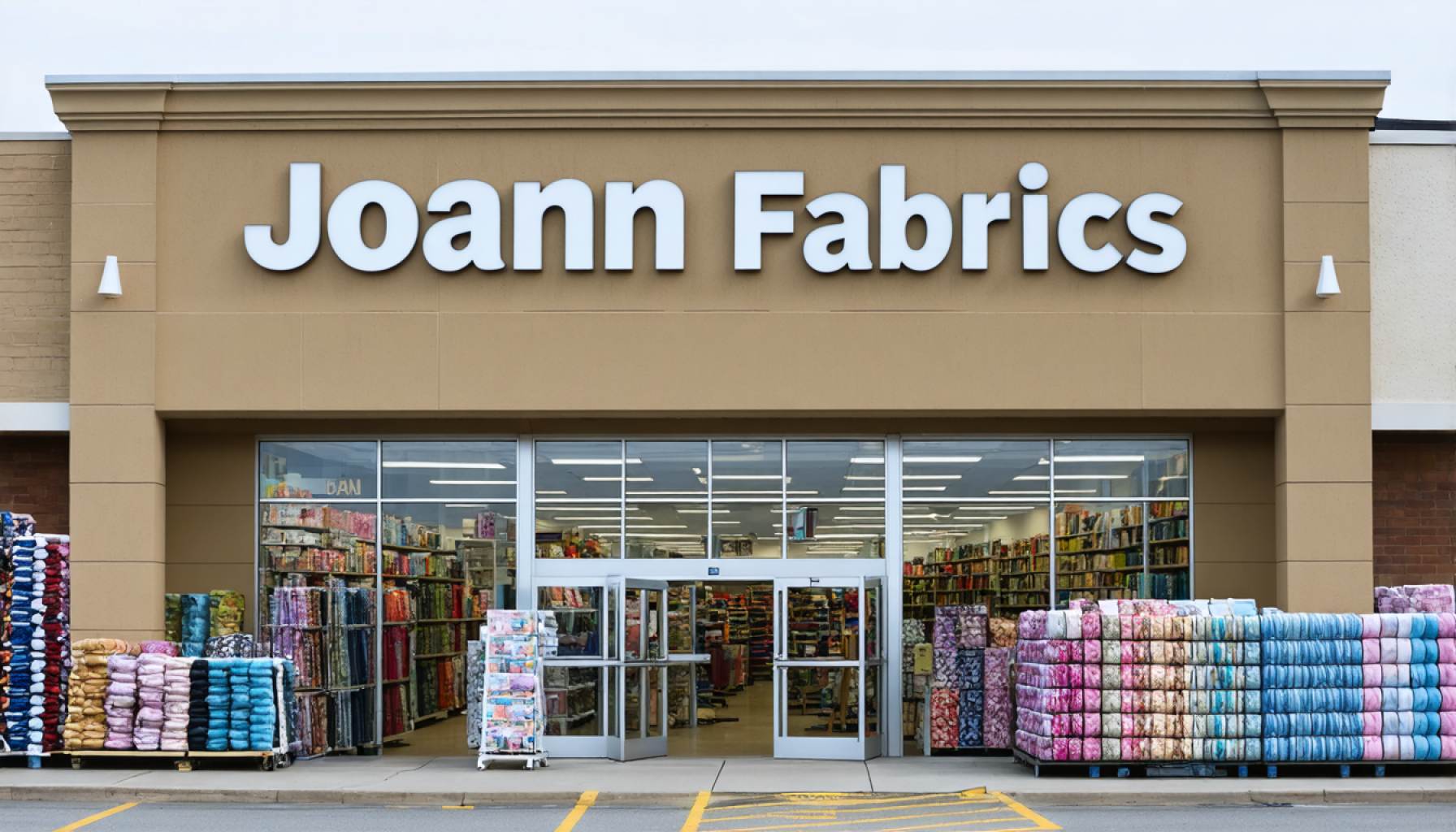- Joann Fabrics, a beloved retailer in the crafting community, is closing all its stores after 80 years in business.
- The company faced financial challenges, filing for Chapter 11 bankruptcy twice in one year and closing over 500 stores before deciding to close the remaining 300 stores.
- Assets were acquired by GA Group and the company’s lenders, leading to the complete closure.
- Going-out-of-business sales are taking place, with an emphasis on minimizing the impact on employees and customers.
- Joann Fabrics leaves behind a legacy of creativity, community, and cherished memories within the crafting world.
Amidst the bustling world of crafts where creativity blossoms, Joann Fabrics stands as a beloved institution. However, after eight decades of fostering creativity and community, the iconic retailer will thread its final needle. Known for their expansive aisles lined with vibrant fabrics and crafting essentials, Joann’s will close every store, leaving an undeniable gap in the hearts of millions.
The revered retailer’s downfall began earlier this year as they sought Chapter 11 bankruptcy protection, marking their second attempt in just a year. Despite attempts to revitalize their operations, including closing over 500 stores, the final unraveling is now set. The end came when the company’s assets went under the hammer, acquired by GA Group in tandem with its lenders. This move cemented the decision to also close the remaining 300 stores, including all 21 in Washington state.
Inside the colorful yet now bittersweet stores, the company orchestrates going-out-of-business sales. Fabric bolts stand tall, awaiting eager hands one last time. A spokesperson shared that the priority remains to gracefully unwind the company’s operations while minimizing the impact on devoted employees and loyal customers.
The vibrant tapestry of community that Joann Fabrics wove endures as their most cherished legacy. Enthusiasts and plush bear-makers alike recall the joy found in aisles bursting with possibility.
The enduring spirit of Joann Fabrics isn’t woven from cloth or yarn but in the patchwork of memories they’ve stitched together across America. As customers make their final purchases, the key takeaway remains clear: within every ending lies the potential for a new beginning in the creative world.
Joann Fabrics: What Went Wrong and What’s Next for Crafting Enthusiasts?
Introduction
Joann Fabrics, a staple in the crafting community for decades, is closing its doors after filing for Chapter 11 bankruptcy. As the company winds down its operations, crafting enthusiasts are left wondering what led to this downfall and how to adapt to a landscape without Joann’s aisles of fabric and supplies. Let’s dive into the critical questions surrounding this monumental event and explore the implications for both consumers and the industry.
How-To Steps & Life Hacks: Navigating Craft Supplies Without Joann Fabrics
1. Explore Alternative Retailers: With Joann Fabrics closing, consider other chains like Michaels, Hobby Lobby, or online platforms like Amazon and Etsy for crafting supplies.
2. Support Local Businesses: Seek out local fabric and craft stores that can offer unique selections and personalized service.
3. Join Online Communities: Platforms such as Reddit, Facebook Groups, or Pinterest have robust crafting communities sharing tips, tutorials, and best buy suggestions.
Real-World Use Cases: Adaptation in Crafting
– Upcycling and Recycling: Emphasize sustainability by using materials found at home for crafting projects.
– Community Workshops and Meetups: As physical spaces dwindle, workshops and community meetups become pivotal in sustaining crafting culture.
Market Forecasts & Industry Trends
As crafting remains popular, the market for online craft supplies is expected to grow, driven by convenience and greater accessibility. According to a report by Allied Market Research, the global craft supplies market could see a significant increase, driven by the DIY and personalization trends.
Reviews & Comparisons
With Joann’s departure, comparing remaining options is crucial:
– Michaels vs. Hobby Lobby: Michaels offers a wide variety of art supplies and classes, while Hobby Lobby focuses on home decor and seasonal items alongside crafts.
– Online Solutions: Etsy provides unique, artisan-crafted materials, while Amazon ensures quick delivery and broad inventory but often lacks personalization.
Controversies & Limitations
Joann Fabrics’ closure underscores challenges faced by physical retailers, such as high operating costs and online competition. Critics argue that missed opportunities for innovation and adaptation contributed to the downfall.
Features, Specs & Pricing
While specifics on pricing shifts are uncertain post-Joann, expect competitive prices from remaining brick-and-mortar stores, efforts to lure new customers. Online platforms often offer varied price ranges due to lower overhead costs.
Security & Sustainability
Craft supplies sustainably sourced remain crucial as current trends prioritize eco-friendly products. Retailers who innovate in sustainability may capture market share from Joann’s exiting loyal base.
Insights & Predictions
The crafting community will likely shift further online, increasing demand for virtual workshops and direct-to-consumer models for fabric purchases.
Pros & Cons Overview
Pros:
– Greater exploration of online resources.
– Opportunity for local businesses to thrive.
Cons:
– Loss of a beloved community space.
– Initial adjustment period for loyal customers.
Actionable Recommendations
1. Exploit Online Resources: Use digital platforms to fulfill material needs.
2. Community Engagement: Start or join local crafting groups to maintain the community spirit Joann fostered.
3. Embrace Sustainability: Leverage the closure as an incentive to adopt more eco-friendly practices.
For comprehensive crafting ideas and alternative resources, refer to Michaels and Etsy.
Conclusion
Joann Fabrics’ closure marks the end of an era, yet it opens new doors for innovation in the crafting world. Adaptation, whether by embracing new retailers or more sustainable practices, will carry the crafting community forward. Embracing this transition with an open mind can lead to the development of new traditions and creative opportunities.
